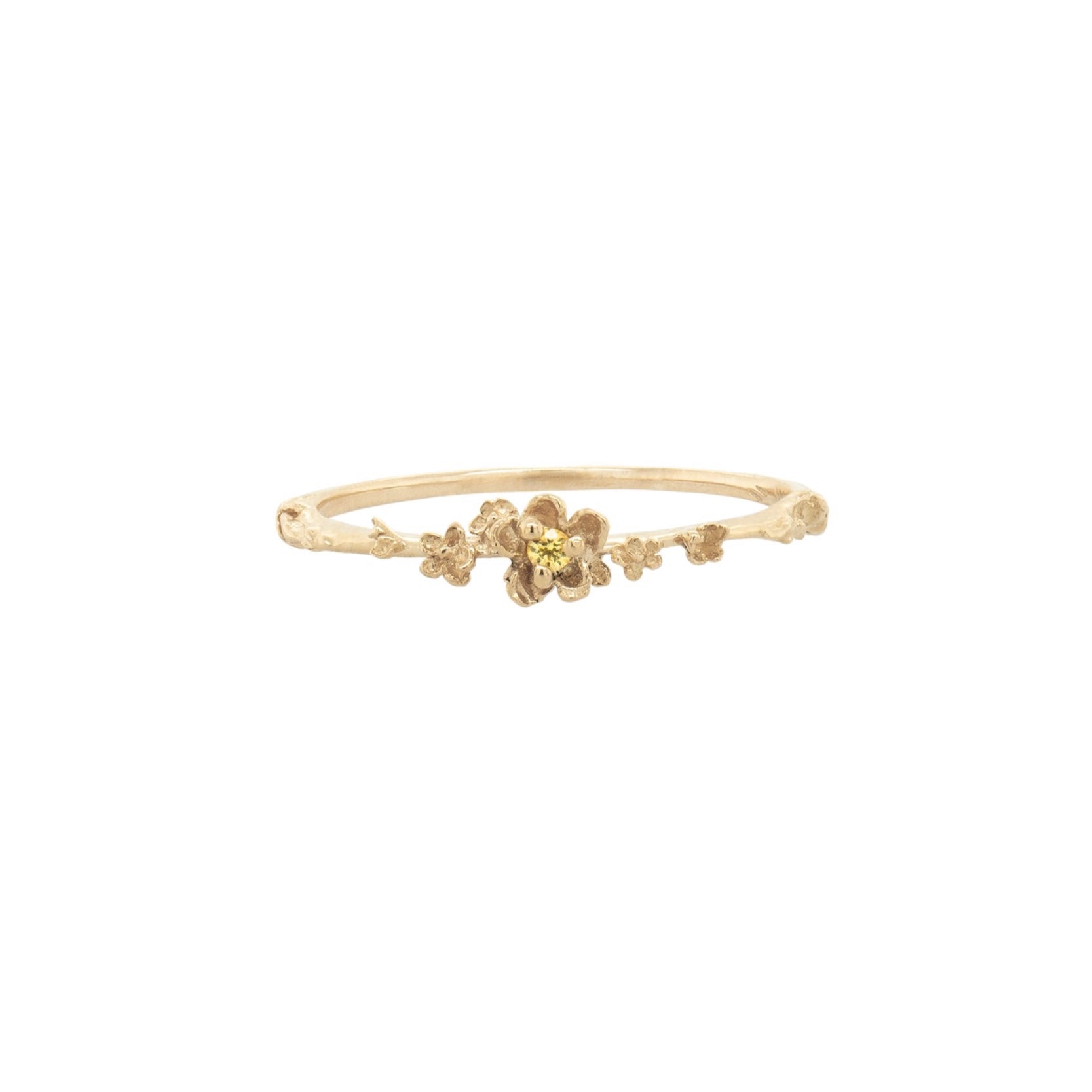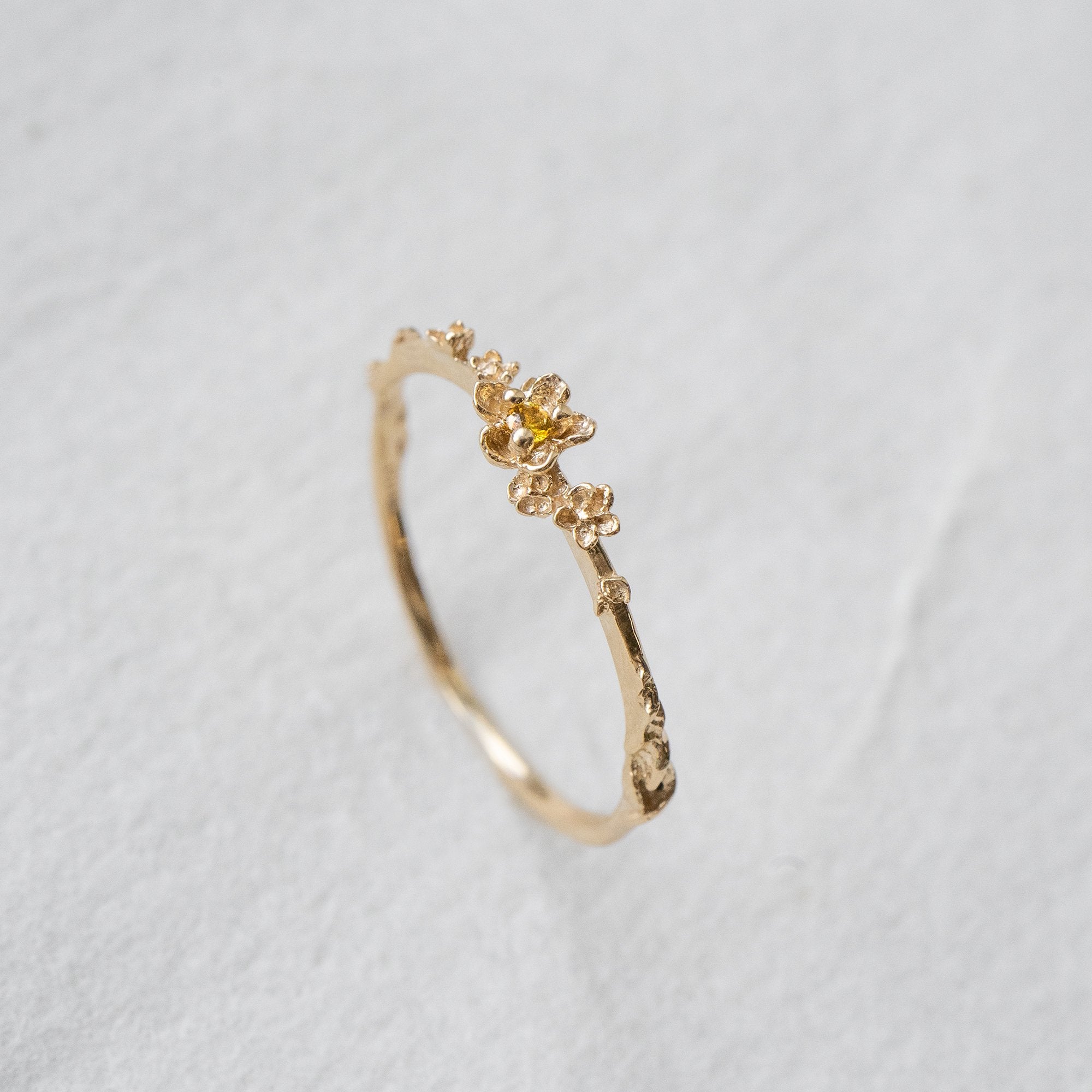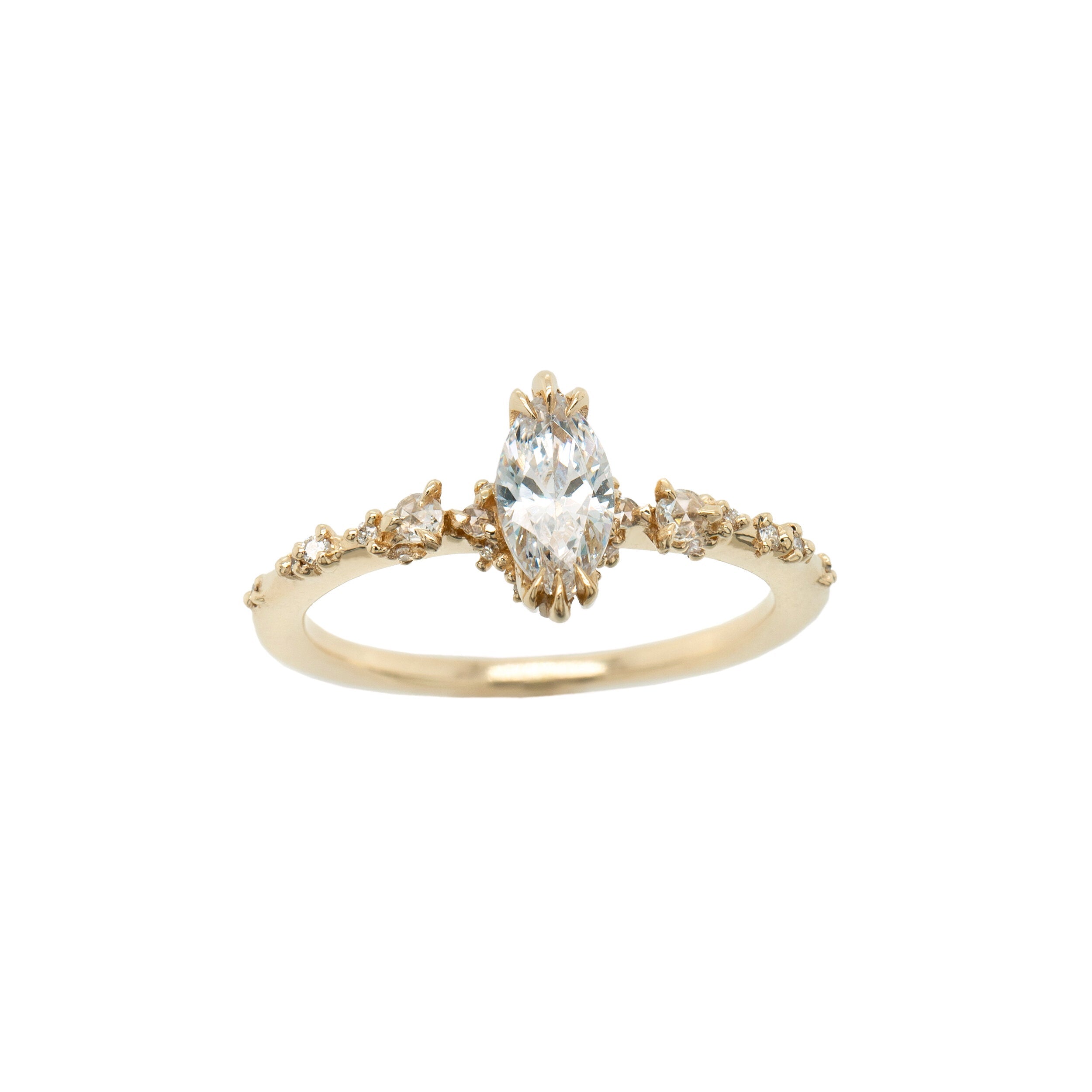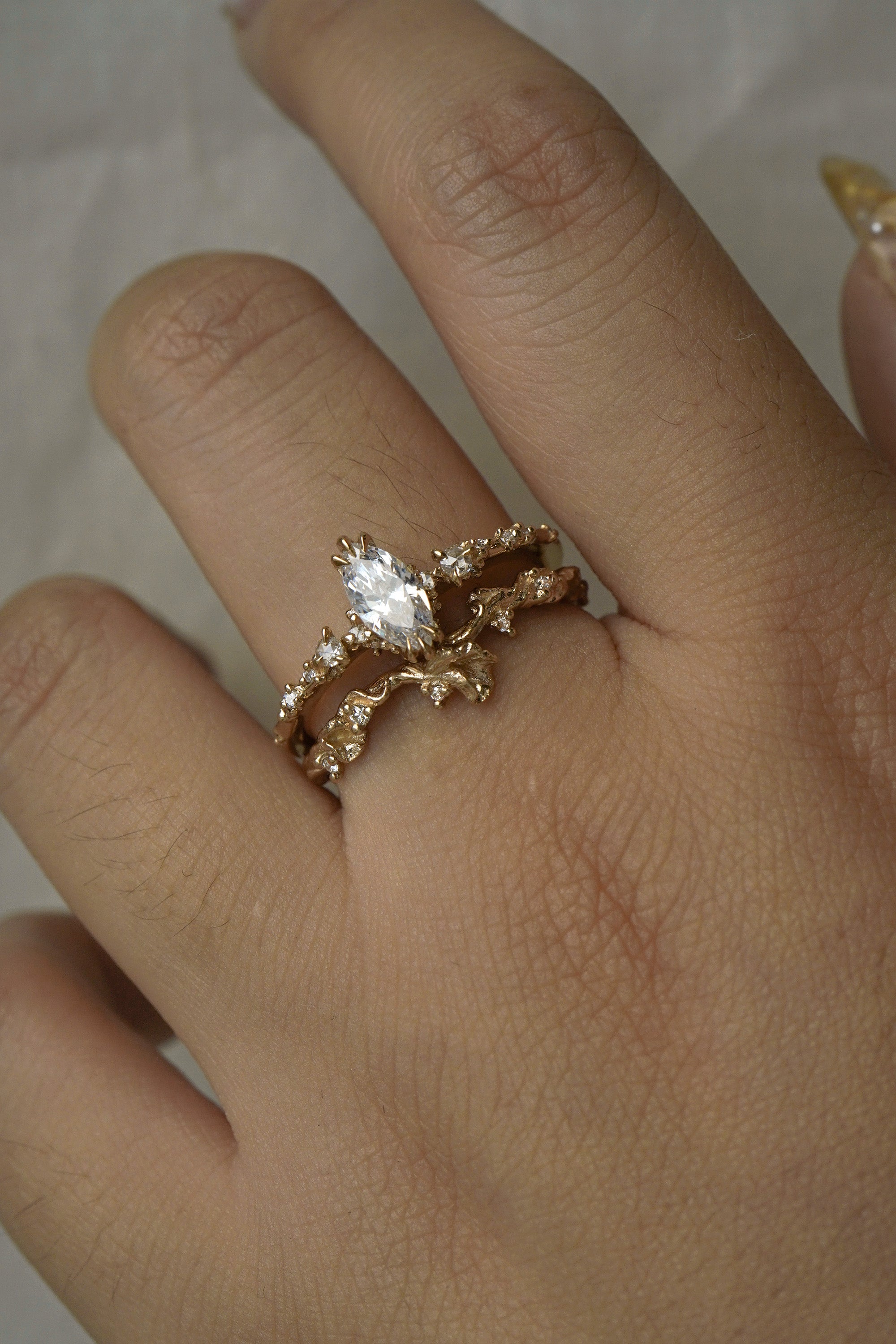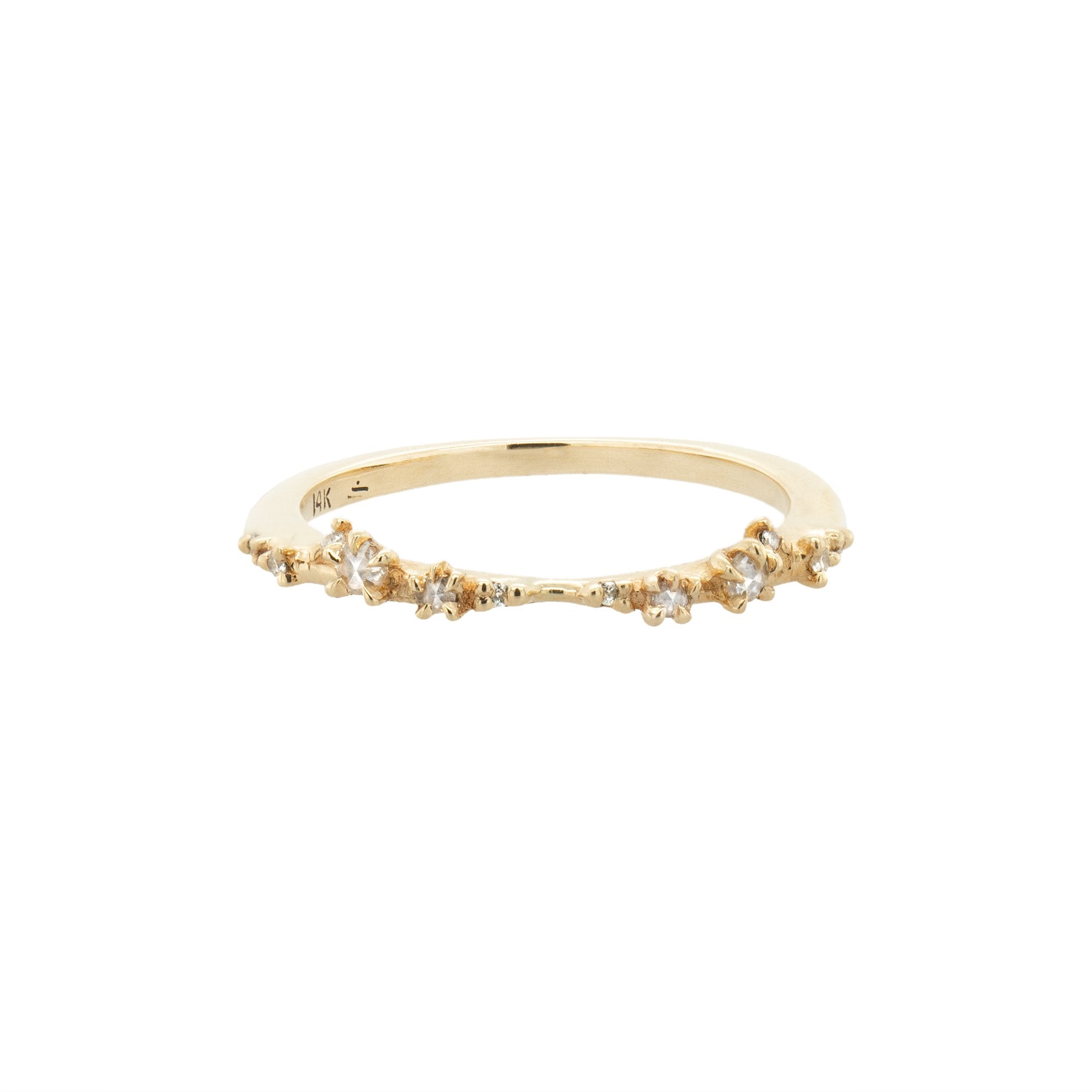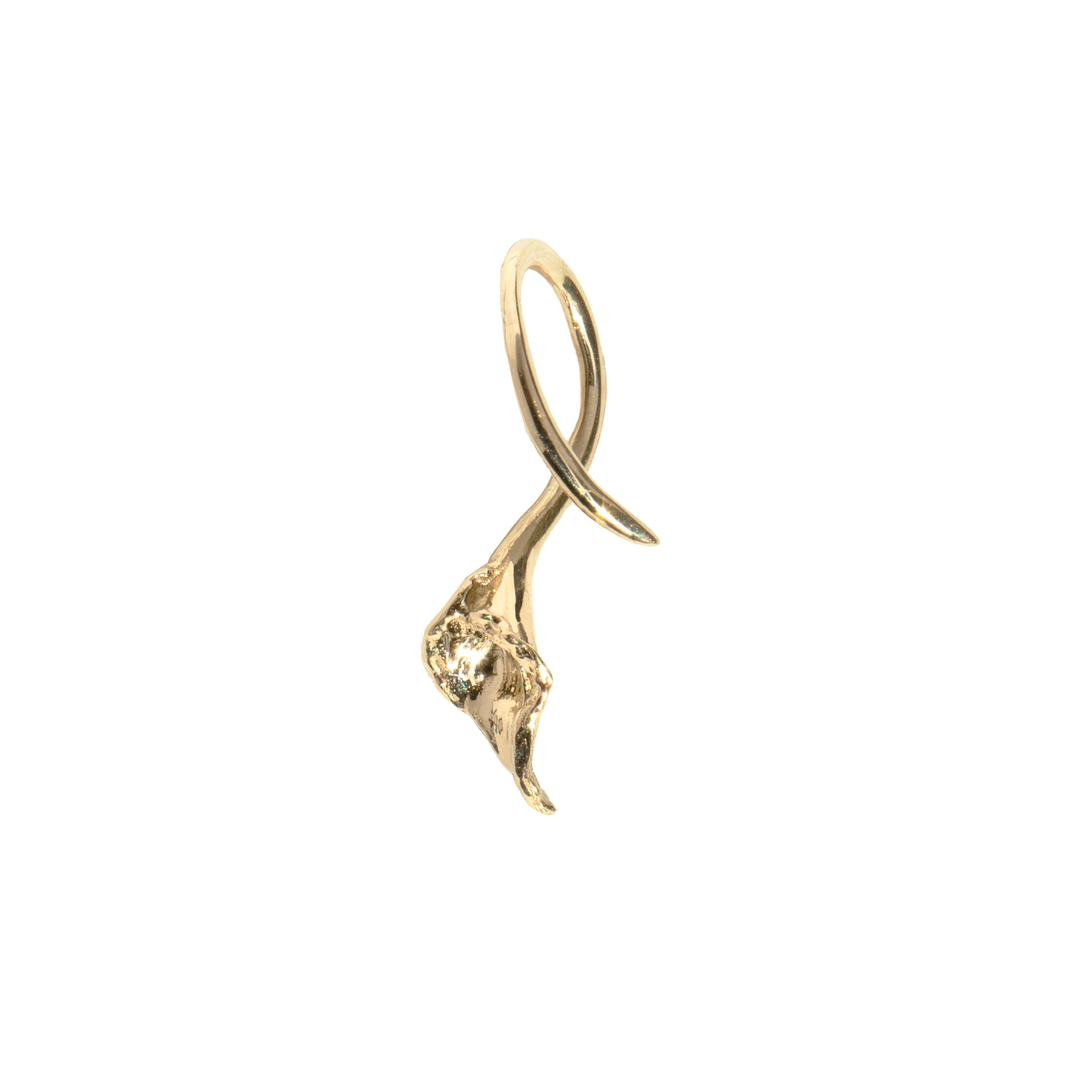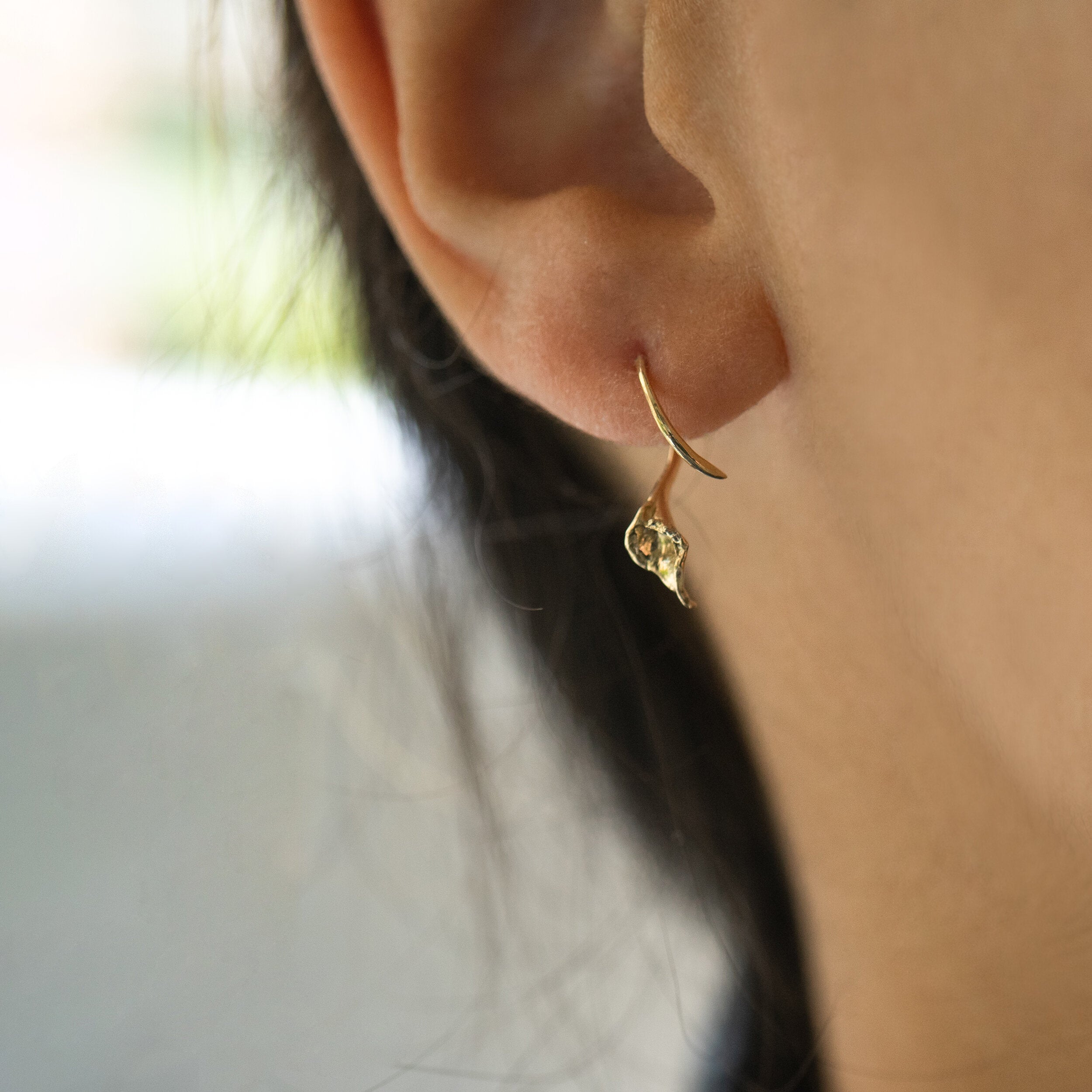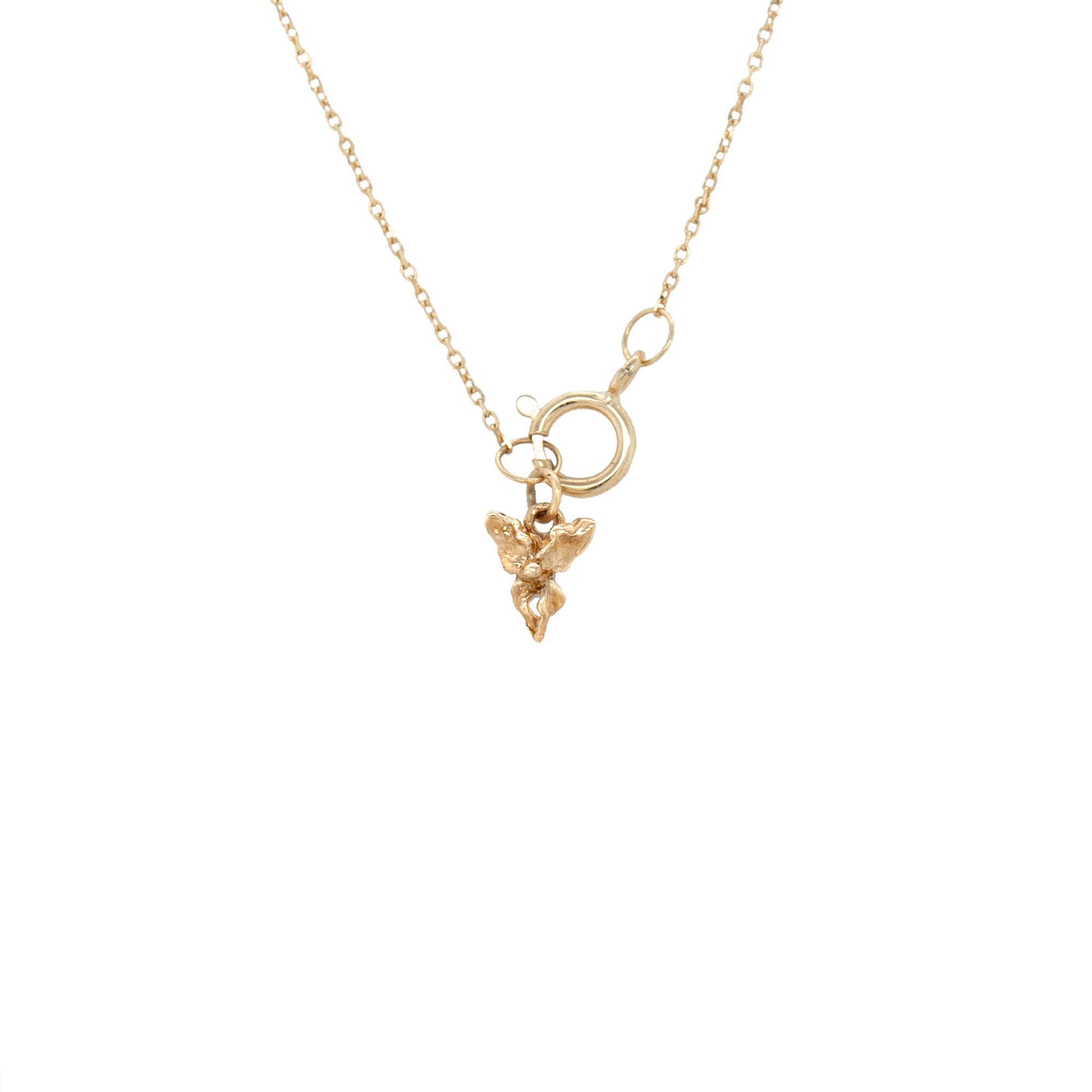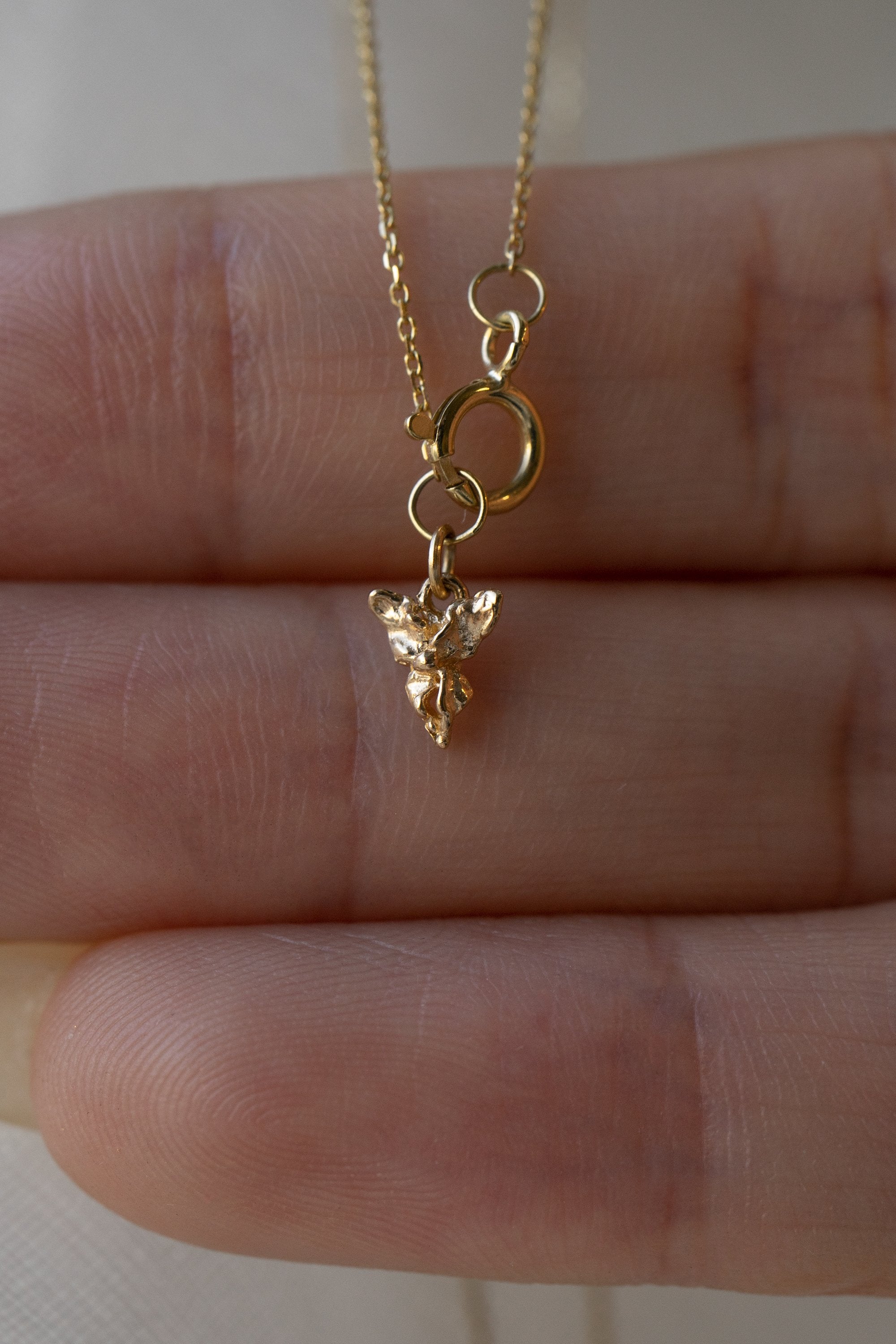Diamonds have a long and multifaceted history, and have played an important role in numerous cultural, religious, and historical contexts worldwide. From ancient times, diamonds have been revered for their rarity, beauty, and symbolism, and were often associated with power, wealth, and love. Today, diamonds have come to represent everlasting love thanks to their unparalleled durability, making them the perfect stones for engagement rings and wedding bands.
While the slogan “A Diamond is Forever” was coined by De Beers mines to market the sparkling gemstone, it’s more than just a snappy tagline; diamond is the hardest and most scratch-resistant natural substance on earth.
Even though diamonds have captured our admiration for thousands of years, there was no consistent method of measuring a diamond’s quality until the 1940s, when Robert M. Shipley – founder of the Gemological Institute of America (GIA) – coined the 4Cs to help students remember the four factors that characterize a faceted diamond: colour, clarity, cut, and carat weight.
Today, the 4Cs are recognized as the standard for diamond grading, used by gemmology laboratories worldwide.
Colour
When one thinks diamonds, they are usually thinking about "colourless" diamonds. Colour in diamonds comes from traces of various elements; a pure diamond of 100% carbon will be totally colourless, but when a diamond has traces of nitrogen in it, it will appear yellow or brown (the intensity of which depends on how much nitrogen there is). Nitrogen is the most common element that appears in diamonds other than carbon, with approximately 98% of all gem quality diamonds containing nitrogen impurities.
For colourless diamonds, the scale starts at D and goes all the way down to Z. Diamonds that are DEF colour are considered colourless, and diamonds that are GHI colour are considered near colourless. Any diamond from D to I will appear colourless to the naked eye. After that, diamonds begin to take on a faint yellowish tinge, that becomes more and more pronounced the further down the scale you get.
You can use the interactive scale below (courtesy of the GIA) to explore the different colour gradings.
Fancy Colour Diamonds
There are other factors that can impact the colour of a diamond, such as the trace elements that are incorporated during its formation, or differences in the crystal structure.
Colours such as blue, pink, purple, red, green, and orange are all extremely rare; some more than others. There are also fancy grey diamonds, which are usually the result of a high level of hydrogen, and fancy white diamonds, which usually have a milky white colour and can display colourful flashes referred to as opalescence.
Fancy coloured diamonds are graded on a different scale than colourless diamonds, which takes into consideration saturation and intensity. The deeper and richer the colour, the more rare and thus more expensive the diamond will be.

To be considered a fancy colour diamond, it must have been officially graded as such.
Sometimes coloured diamonds are not officially graded, in which case they are referred to informal descriptors based on their appearance. Terms like "champagne" and "cognac" diamonds are not official terms, but rather colloquial descriptors for specific colours.
Colour can be a very individual preference, and there are many beautiful diamonds in a range of colours that aren't considered "fancy" but are still enchanting!
Clarity
The clarity of the diamond refers to imperfections in the stone. No diamond is absolutely perfect, but some come close. These imperfections are located either inside the diamond (known as inclusions) or on the surface of the diamond (known as blemishes).
The clarity grading scale goes from flawless to included. Most diamonds that are SI1 or better are considered "eye clean" -- that is, inclusions are not noticeable to the naked eye.
| Flawless (FL) | No inclusions or blemishes are visible to a skilled grader using 10× magnification |
| Internally Flawless (IF) | No inclusions and only blemishes are visible to a skilled grader using 10× magnification |
| Very, Very Slightly Included (VVS1 or VVS2) | Inclusions are difficult for a skilled grader to see under 10× magnification |
| Very Slightly Included (VS1 or VS2) | Inclusions are minor and range from difficult to somewhat easy for a skilled grader to see under 10x magnification |
| Slightly Included (SI1 or SI2) | Inclusions are noticeable to a skilled grader under 10x magnification |
| Included (I1, I2, or I3) | Inclusions are obvious under 10× magnification and may affect transparency and brilliance |
Most gem-quality diamonds fall into the SI or VS categories. When a grading has more than one level (such as VS1 vs VS2), the distinction will depend on the type of inclusions, their size, and their location.
Inclusions are not always a bad thing! Salt and pepper diamonds, for instance, are diamonds that are heavily included with black crystals. Those imperfections can give the diamond a mystical, starry appearance. Some diamonds have a single, prominent mark like a birthmark, while others have "feathers" that create unique sparkles. While they can technically be considered imperfections, inclusions are also evidence of a diamond's unique history, and to some are evidence of the wonder of nature.
Cut
The cut of a diamond refers to the quality of its make and polish. It does not actually refer to the shape of the diamond, though the terms are sometimes used interchangeably. Cut is the most important characteristic for a beautiful diamond, and has the most impact on a diamond's fire, sparkle, and brilliance.
Diamonds can be cut into a variety of shapes, but round brilliant cuts are the most common (rounds are so prevalent that any other shape is considered a "fancy shape" diamond). The round brilliant cut is designed to return the most light possible, and in an excellent cut stone, light enters through the top, bounces around the cone shaped bottom, and comes back out the top.
Use the interactive tool below (courtesy of the GIA) to explore the impact of various factors on round brilliant cut diamonds and the various cut gradings.
At Laurie Fleming, we will always get triple excellent cut for our round brilliant diamonds. "Triple excellent", sometimes written as 3x, means that the diamond has been graded as having excellent cut, polish, and symmetry -- it is as close to perfection as possible, and will have maximum sparkle, scintillation, and brilliance.
Fancy shape diamonds (anything other than round brilliant cuts) are graded slightly differently for cut. Round brilliant cuts have been scientifically designed to have the maximum light return and sparkle, and there is a possible "perfect" cut where every facet is the best possible size, shape, and angle. For any other shape, the exact proportions and angles of the facets can vary, so there is no such thing as an excellent cut grading for these shapes. Shapes such as emerald, oval, marquise, pear, cushion, etc, are instead graded on just their polish and symmetry.
For these other shapes, Laurie Fleming works with stones that have excellent or very good polish and symmetry, paying extra care to proportions and overall beauty.
Carat Weight
Though often confused with a size measurement, a diamond's carat actually refers to its weight. Diamonds and other gemstones are weighed in metric carats; one carat is equivalent to about the same weight as a paperclip, or 0.2 grams.
The term carat comes from early gem traders, who used carob seeds as counterweights in their scales thanks to the seed's (relatively) consistent weight. The United States adopted 0.2g as the standard weight for a carat in 1913, and today, the measurement is consistent worldwide.
One carat is divided into 100 "points". A 25 point diamond will weigh 0.25ct. You can use the interactive tool below to compare round brilliant cut diamond sizes (courtesy of the GIA).
Since round brilliant cut diamonds have consistent proportions, carat weight is a relatively reliable indicator of size. For other shapes or other gemstones, however, it can vary quite a bit!
Not all weights are created equal
Because different gemstones have different densities, carat weight can be distributed differently. For example, corundum (the mineral name for both sapphires and rubies) is more dense than diamond, and so a 1ct round brilliant cut sapphire will look smaller than a 1ct round brilliant cut diamond, because sapphires are heavier and weigh more. The sapphire would have a diameter of approximately 6mm, while the diamond would have a diameter of approximately 6.5mm.
This is why for sapphires, in conversation we usually refer to them by dimensions (millimeter sizes) rather than carat weight, since it's more clear.
When sourcing stones, we will always provide both carat weights and dimensions.
So how do you choose?
At the end of the day, the most important thing is what you find beautiful! The GIA grading system with the 4Cs was designed for the traditional colourless and clear diamonds we are used to seeing in jewellery, but today other diamonds are also increasing in popularity for their aesthetic beauty; champagne (pale yellowish) and salt and pepper (diamonds with black inclusions) are admired and appreciated for their unique characteristics, and can be a beautiful option for someone who wants something durable and sparkling but also a little bit different. There is no right or wrong diamond, so you should follow your heart and choose what speaks to you!

